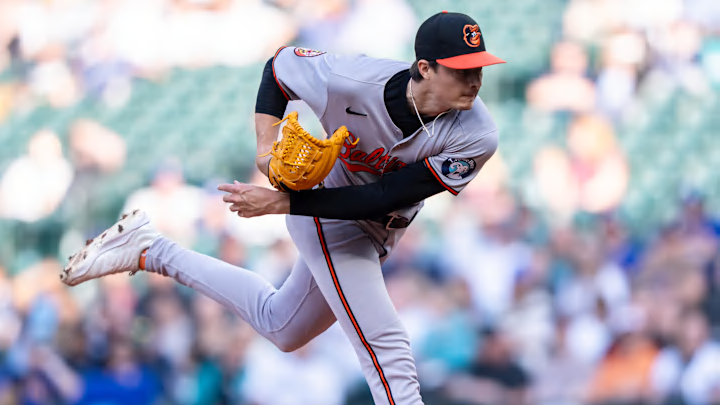Cade Povich's last outing for the Baltimore Orioles won't be classified as a "start" in the box score. The same goes for Dean Kremer, despite tossing seven innings of work in his last appearance. That's because both pitchers, typically starters, entered the game in the second inning.
First innings haven't given Povich a ton of trouble this season. On the year, according to Baseball Reference, the lefty has allowed just a .217 batting average and .601 OPS, combining for a 1.50 ERA. That's his best figure of any inning with more than 10 plate appearances against.
However, the rationale for starting reliever Scott Blewett in Sunday's game comes from a desire for length. The first time Povich sees a hitter in the game, according to Baseball Reference, his OPS allowed is just under .700. The second time, that figure jumps up to .842. The third time around the order, that number is 1.116. As such, it makes sense to try to get Povich through a clean outing without facing the order for a third time.
In Sunday's game, everything went according to plan. Blewett did allow two runs in 2 2/3 innings of work, but Povich followed him with 3 2/3 clean innings, allowing just three hits and no earned runs. The lefty exited the game after facing 15 batters, just shy of the third time through the order, and gave the rest of the bullpen just 2 2/3 innings the rest of the way to account for.
Orioles experimenting with opener approach
The same logic can be applied to Kremer, who entered Thursday night's loss to the Detroit Tigers behind Keegan Akin. Kremer has had success the first and second time through the order this season, but has allowed an OPS of 1.061 seeing batters for the third time. Kremer's outing played out a bit differently, though, facing 27 batters and allowing just four earned runs in one bad inning in the midst of seven innings of work. Something about best-laid plans.
Let's make a hypothetical example: a reliever starts the game and does not allow a run. He gives up one hit, no walks, and has a clean inning. The cleanup hitter is the last batter he retires. So, the starter enters the game in the second inning, facing the No. 5 hitter.
The one through four hitters are now the last four batters he faces rather than the first four. That means, in theory, the starter could see the five through nine hitters twice and the one through four hitters just once for a total of 14 batters faced. Facing 14 batters at the beginning of the game would mean seeing the one through five batters twice and the six through nine batters just once. Fancy maneuvering.
In a pivotal month of June, every move from interim manager Tony Mansolino will be under a microscope. Right now, he appears to be pushing all the right buttons.
